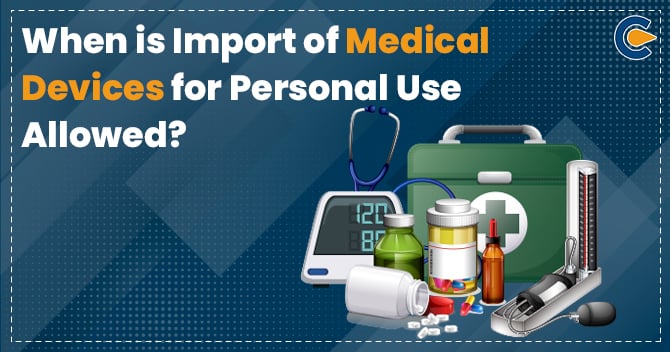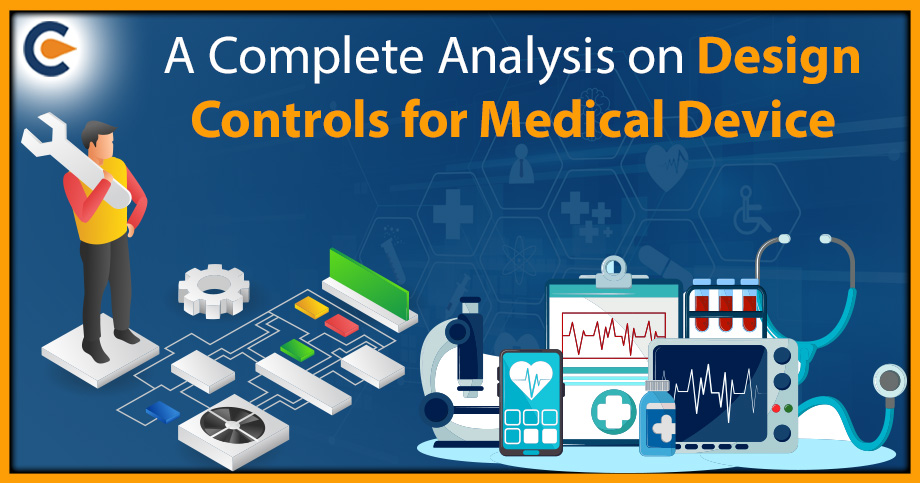The export of medical devices from India has gained significant momentum in recent years due to the country’s growing reputation as a hub for quality healthcare products at competitive prices. The Indian medical device industry offers a wide range of products, including diagnostic equipment, surgical instruments, implants, hospital furniture, and more. Exporting medical devices from India requires careful planning and adherence to specific regulations to ensure a smooth and successful process. This article aims to provide a detailed guide on how to export medical devices from India, outlining the necessary steps, regulations, and best practices to follow. This article aims to provide a detailed guide on how to successfully export medical devices from India, covering the essential steps and regulations involved.
An Overview on the method of exporting of medical devices
Exporting medical devices from India can be a lucrative venture for manufacturers and suppliers. India has emerged as a global hub for medical device production due to its favorable regulatory environment, skilled labor force, and cost advantages.
Who is the authority to issue NOC for the medical device export?
In India, the authority responsible for issuing the No Objection Certificate (NOC) for the export of medical devices is the Central Drugs Standard Control Organization (CDSCO). CDSCO is the national regulatory authority for pharmaceuticals & medical devices in India.
Conditions complied with by a license holder in case of export of medical devices in India
The conditions to be complied with by a license holder in case of export of medical devices in India are governed by the Medical Devices Rules, 2017. Here are some general conditions that were applicable:
1. Registration: The medical device should be registered with the CDSCO, which is the regulatory authority for medical devices in India. The license holder should possess a valid manufacturing license or import license for the medical device.
2. Quality Management System: The license holder must have a strong quality management system in place for manufacturing and exporting medical devices. Compliance with international quality standards, such as ISO 13485, is often required.
3. Product Classification: The license holder should determine the appropriate classification of the medical device based on its intended use and potential risk. Different regulatory requirements apply to different classes of medical devices.
4. Compliance with Standards: The medical device should comply with relevant Indian and international standards, such as the Indian Pharmacopoeia, International Electro technical Commission[1] (IEC) standards, or other applicable standards specific to the device type.
5. Labeling and Packaging: The license holder must ensure that the medical device is properly labeled and packaged according to applicable regulations. The labeling should include essential information, such as device name, intended use, batch/lot number, manufacturing date, expiry date, and any specific warnings or precautions.
6. Clinical Data: Depending on the risk class and intended use of the medical device, the license holder may be required to provide clinical data or evidence of safety and performance to support the device’s regulatory compliance.
7. Export Documentation: The license holder should maintain proper documentation for export purposes, including invoices, packing lists, shipping details, and any other required export-related documentation.
8. Adverse Event Reporting: The license holder should establish a system to collect, assess, and report any adverse events or incidents related to the medical device. This information should be shared with the regulatory authority as per the applicable guidelines.
Documents required for the export of medical devices in India
The specific documents required for the export of medical devices in India may vary depending on the nature of the device and the regulatory requirements. However, generally, the following documents are commonly required for the export of medical devices in India:
1. Free Sale Certificate: This certificate is issued by the regulatory authority to confirm that the medical device is freely sold or marketed in India.
2. Manufacturing License: A copy of the manufacturing license obtained from the appropriate authority in India.
3. Registration Certificate: If the medical device is registered with the CDSCO, a copy of the registration certificate should be provided.
4. Technical Specifications: Detailed technical specifications of the medical device, including design, components, and manufacturing process.
5. Product Information: Product brochures, labeling, and instructions for use.
6. Quality Certifications: Any quality certifications obtained for the medical device, such as ISO 13485 (Quality Management System for Medical Devices).
7. Clinical Data: Clinical trial data or other relevant clinical evidence supporting the safety and efficacy of the medical device.
8. Regulatory Approvals: Copies of any regulatory approvals obtained from international regulatory authorities, if applicable.
9. Importer/Exporter License: A copy of the importer/exporter license obtained from the appropriate authority.
Process required for the export of medical devices
Following is the step by step process required for the export of medical devices in India:
Step 1: Understanding the Regulatory Framework
Before venturing into exporting medical devices, it is crucial to have a clear understanding of India’s regulatory framework. The regulatory body responsible for overseeing medical devices in India is the Central Drugs Standard Control Organization (CDSCO) under the Ministry of Health and Family Welfare. The CDSCO has established guidelines and regulations to ensure the quality, safety, and efficacy of medical devices.
Step 2: Market Research and Product Selection:
Conduct thorough market research to identify potential export markets for your medical devices. Consider factors such as demand, regulatory requirements, competition, and pricing. Identify the specific medical devices you intend to export and assess their compliance with international standards and regulations.
Step 3: Classify your Medical Device
Medical devices in India are classified into 4 categories, based on the level of risk associated with their use. The classification determines the regulatory requirements and documentation needed for exporting. The classification is as follows:
1. Class A: Low-risk devices (e.g., bandages, syringes).
2. Class B: Low-to-moderate risk devices (e.g., non-invasive devices like stethoscopes).
3. Class C: Moderate-to-high risk devices (e.g., orthopedic implants, X-ray machines).
4. Class D: High-risk devices (e.g., cardiac implants, implantable defibrillators).
Step 4: Obtain the Required Licenses and Certifications
Obtain the necessary registrations and licenses to legally export medical devices from India. The following are some key requirements:
1. Medical Device Manufacturing License: Obtain a license from the CDSCO or the State Licensing Authority. The license ensures compliance with quality standards and is mandatory for manufacturing or selling medical devices.
2. Import-Export Code (IEC): Register for an IEC with the DGFT or the Director General of Foreign Trade. This code is essential for export transactions and can be obtained online by submitting the required documents.
3. Free Sale Certificate (FSC): Apply for an FSC from the CDSCO, which certifies that the medical devices are freely sold in India. This certificate is often required by foreign authorities for import clearance.
4. ISO Certification: Obtain ISO 13485 certification, which demonstrates compliance with international quality standards for medical devices.
5. Goods and Services Tax (GST) Registration: Register for GST with the appropriate tax authority if your turnover exceeds the prescribed threshold.
Step 5: Quality Assurance and Regulatory Compliance
Ensure that your medical devices adhere to the necessary quality standards and comply with the relevant regulations. This includes:
1. Good Manufacturing Practices (GMP): Implement and maintain GMP standards to ensure the quality, safety, and efficacy of your products.
2. Technical Documentation: Prepare comprehensive technical documentation, including product specifications, design drawings, manufacturing processes, and quality control procedures.
3. Labeling and Packaging: Ensure that your medical devices are properly labeled and packaged, complying with the regulatory requirements of the target market.
4. Medical Devices Rules, 2017: Comply with the regulatory requirements outlined in the Medical Devices Rules, which cover aspects such as classification, registration, labeling, and adverse event reporting.
5. Bureau of Indian Standards (BIS): Adhere to BIS standards for specific medical devices, where applicable.
6. International Standards: Comply with international standards, such as ISO 13485 (Quality Management Systems for Medical Devices), ISO 14971 (Risk Management for Medical Devices), & ISO 10993 (Biological Evaluation of Medical Devices).
Step 6: International Market Research and Targeting
Conduct thorough market research to identify potential export markets for your medical devices. Consider factors like market demand, competition, regulatory environment, and reimbursement policies. Identify distributors, agents, or partners who can assist with market entry and distribution in the target countries.
Step 7: Export Documentation and Logistics
To export medical devices, you will need to complete various export documentation and comply with logistics requirements. The essential documents include:
1. Commercial Invoice: Provide a detailed invoice specifying the description, quantity, value, and classification of the medical devices.
2. Packing List: Prepare a packing list mentioning the details of the packaging, weight, and dimensions of each shipment.
3. Bill of Lading/Airway Bill: Obtain the bill of lading/airway bill, commercial invoice and insurance certificate which serves as proof of shipment.
4. Certificate of Origin: Obtaining a certificate of origin from a designated authority for the verification of the origin of the medical devices.
5. Regulatory Documents: It includes all the relevant documents such as the establishment license, test reports, product specification and labelling details.
6. Shipping Logistics: Choose a reliable freight forwarder or shipping agent to handle the transportation of your medical devices. Ensure proper packaging to safeguard the products during transit. You also need to check transportation time, cost and mode of shipment (air, sea, or road) based on your requirement and the destination market.
Step 8: Customs Clearance:
Ensure compliance with customs regulations and procedures. Submit the required documents to the customs authorities, including the shipping documents, invoice, packing list, and other relevant certificates. Pay any applicable customs duties and taxes. Engage a licensed customs broker, if necessary, to navigate the customs clearance process smoothly.
Step 9: Post-Export Responsibilities:
Track the shipment until it reaches its destination. Maintain communication with the importer to address any concerns or inquiries.
Conclusion
It’s important to note that the specific requirements and procedures for exporting medical devices may be subject to change and it is advisable to consult the CDSCO or seek professional assistance to ensure compliance with the current regulations.
Read our Article:Price Regulation Of Medical Devices In India Under National Pharmaceutical Pricing Authority













